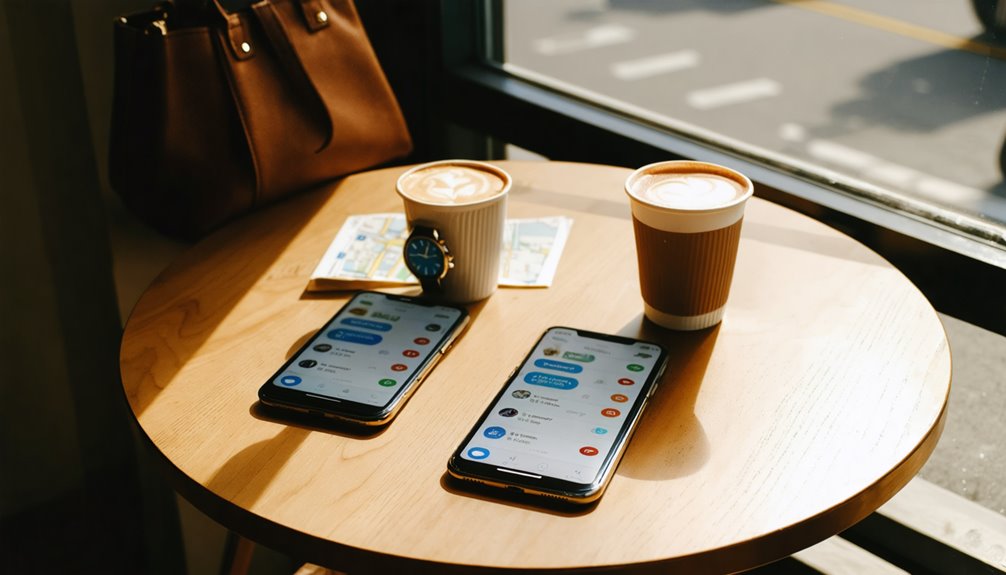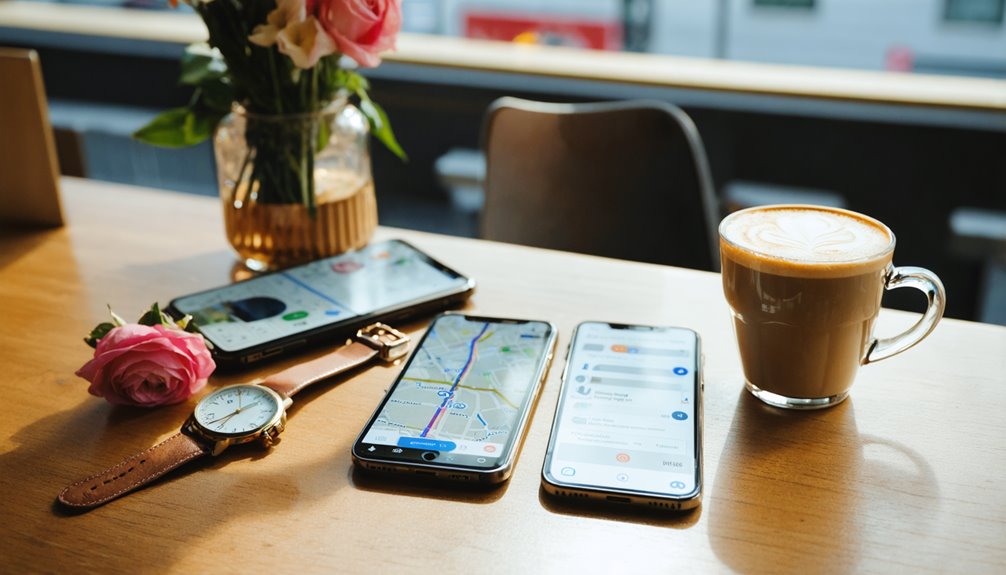How Long Should I Chat With a Match Before Meeting? Expert Dating Timelines

We typically aim to move from match to meeting within 3–10 days, with 5–7 being common when messages flow daily. That pace balances momentum with basic vetting—about 10–20 back-and-forths or a quick phone/video check helps confirm identity and vibe. We adjust for schedules, safety, and comfort. Too fast risks misjudgment; too slow risks fizzled interest. So how do people know when the timing is right—and what scripts actually work?
The Sweet Spot: Typical Timelines That Work

Often, the sweet spot for moving from chat to a first meeting is 3–10 days, with 5–7 days common on dating apps. We see this window align with studies showing momentum fades after extended texting. In practice, a moderate conversation length—enough to verify basics, banter, and logistics—works best. Message frequency matters: daily or near-daily exchanges keep interest without overload. We aim for 10–20 messages each way or a brief call before proposing coffee or a walk. If replies are consistent and tone feels comfortable, we suggest suggesting a date. Waiting much longer often increases drop-off and scheduling friction.
Factors That Should Shape Your Pace

While the 3–10 day window works for many, your pace should adjust to clear signals: safety, logistics, communication quality, and intent. We look for steady, reciprocal replies that match our communication preferences; erratic messaging often predicts poor follow-through. We check schedule fit—if calendars clash for weeks, momentum fades. We gauge emotional readiness: Are we curious, calm, and consistent, or anxious and ambivalent? Shared intent matters; short-term goals versus long-term aims change timing. We notice conversational depth—do topics progress beyond pleasantries? We consider platform shifts (text to call) as a readiness cue. Finally, we align expectations about frequency to prevent mismatches.
Safety First: Vetting Before You Meet

Sometimes the smartest pace is the safest one: before we meet, we verify who we’re talking to and reduce avoidable risks. We confirm names, workplaces, and public social profiles, then cross-check details for consistency. We scan online footprints—photos, timelines, and comments—for red flags like mismatched ages or recycled images. We ask to video chat and look for steady eye contact, environment continuity, and real-time interaction. Where appropriate, we consider background checks, especially if something feels off. We compare notes with shared contacts when available. We avoid sending money, sharing sensitive data, or moving platforms prematurely. Caution protects time and wellbeing.
Signs You’re Ready to Take It Offline
When core signals align, we can move from chatting to meeting with confidence. We’ve exchanged clear photos, consistent availability, and respectful communication. We feel mutual curiosity, ask follow-up questions, and remember details. Our humor translates both ways. We’ve touched on shared values—time, boundaries, and basic life goals—without pressure. Logistics are easy: we can pick a time and public place quickly. We’ve had at least one real-time touchpoint, like a brief call or video chat, to verify vibe and cadence. No major contradictions have appeared. We feel calm, not rushed, and we can state expectations for a short, low-stakes first meet.
When to Speed Up—and When to Slow Down
We’ve covered the signs that suggest we’re ready to meet; now we should calibrate pace. Research on relationship formation suggests aligning timing with reciprocation, safety, and emotional readiness. Let’s read pace cues and adjust deliberately:
1) Speed up if messages are balanced, logistics are easy, and safety checks (social media, quick call) look good.
2) Slow down if replies feel erratic, values clash, or boundaries are pushed—those are risk flags.
3) Speed up after a brief video chat confirms chemistry and reduces ambiguity.
4) Slow down if we’re trauma-triggered, recently out of a relationship, or overinvested; cooling-off protects judgment.
Scripts and Messages to Suggest the Date
Let’s cut to the chase and turn momentum into a plan with clear, low-pressure messages. We propose concise scripts that respect consent, safety, and logistics. Research on choice overload suggests giving two options; we’ll ask preferences and set a flexible window. We’ll also suggest landmarks to simplify meet-up clarity and reduce no-shows. Copy, tweak, and send.
| Goal | Script | Why it works |
|---|---|---|
| — | — | — |
| Light coffee | “Free Tue or Thu after 6? Coffee near [Landmark]?” | Two choices, public place |
| Walk chat | “Park by [Landmark] Sat AM?” | Daytime, easy exit |
| Drinks | “Wed/Thu? Low-key bar by [Landmark]. Preferences?” | Ask preferences |
| Plan confirm | “Still good for 6 at [Landmark]?” | Clear confirmation |
| Rain check | “Weather’s rough—shift to Sun?” | Flexible, respectful |
Adapting the Timeline for Different Apps and Ages
As we set expectations for meeting, we should account for app culture differences—some platforms encourage quick turnarounds while others support longer chats. We can also adjust pacing by age, since older daters often prefer more messaging before a first date, while younger users tend to meet sooner. Across groups, we’ll prioritize safety and comfort by keeping control of timing, verifying profiles, and suggesting public first meetings.
App Culture Differences
Different apps set different expectations for how fast we move from messaging to meeting, and age groups shape those norms too. Let’s calibrate our timeline to each platform’s culture and features, using what research and platform data suggest about intent and pacing. Profile photos and message norms signal whether quick plans or slower rapport-building fit best.
- Tinder: Fast-moving; suggest a brief chat (10–20 messages), then propose a coffee or walk.
- Bumble: Moderate pace; match-to-date often within a week if conversation flows.
- Hinge: Slower, depth-focused; exchange several meaningful prompts before suggesting plans.
- OkCupid: Long-form profiles; align values first, then move to a low-stakes video or date.
Age-Based Pacing
While app culture sets the stage, age often determines tempo: we see younger daters (18–29) moving from match to meet within days, mid-30s to early-40s favoring a week or two, and 50+ pacing toward safety and compatibility checks before meeting. We also notice generational expectations shaping how fast chats escalate. Younger users, used to instant messaging norms, tolerate brief exchanges before plans. As careers and family roles solidify, maturity milestones push us to verify logistics and intentions, stretching timelines. Later-life daters often prefer phone or video first. We suggest aligning cadence with bandwidth, goals, and the app’s typical user base.
Safety and Comfort
Even when the vibe is great, we pace the move from chat to meetup by prioritizing safety and comfort across apps and age groups. We set clear comfort boundaries, confirm identities, and choose timelines that fit the platform’s culture. Research shows safety planning reduces risk without dampening momentum.
- Verify: Use in‑app tools, reverse image searches, and phone verification before sharing personal details.
- Calibrate: On swipe-heavy apps, schedule quicker video calls; on niche apps, allow longer vetting.
- Communicate: State boundaries early—location, time limits, no home pickups.
- Plan: Meet in public, share itineraries with a friend, and use cashless payments.
Conclusion
Let’s aim for a balanced, evidence-based approach: build momentum, vet for safety, and adapt to schedules. For most of us, 3–10 days of consistent chat—about 10–20 exchanges or a quick call—sets a solid foundation. Move sooner if chemistry and logistics align; slow down if red flags or uncertainty pop up. Prioritize clear photos, a public first date, and sharing plans with a friend. With steady pacing and simple safeguards, we can take it offline confidently and comfortably.
